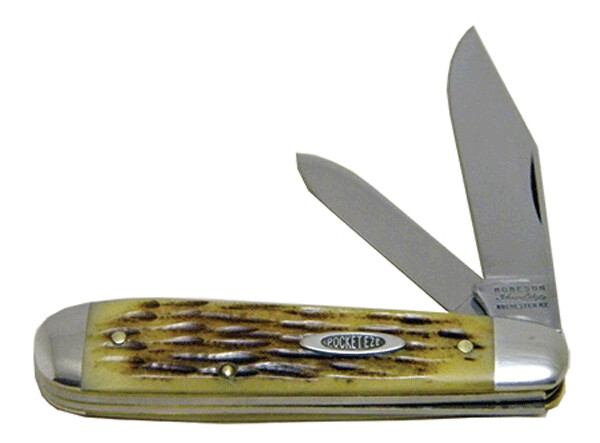Jackknife Carpentry

Getting ready for a sale of property and downsize move (it’s that time) I was showing someone around my property. At the woodshed (more important to me than a garage) they looked askance asking “What’s that?” I needed more to go on, “What?” “What’s that funny thing on the door?” “Oh, that’s the handle and latch.” My questioner looked puzzled, “Where’d it come from?” “I made it.” From the expression on the receiving face, that answer struck no chord at all; “Made it, why not just buy one?”
The short answer for that moment would have been “Buying one is too easy.” But there’s more to it than that. First there is tradition. When in the 50’s my family moved to the North Shore the house (today it might be called a shack) we shared with herds of deer mice and predatory shrew packs (ah, and a weasel got in once too) had a number of latches and handles handmade of twigs, driftwood, and lumber scraps. Coming from a brick built urban home with doorknobs like glass gems these wooden woodsy versions were fascinating. I took them as an essential part of what it meant to live well up the North Shore. Instead of relying on a supplier people made or reused things. Wooden spools from thread made convenient knobs same as short bent sections of twig made little cupboard pulls. To some extent relative poverty encouraged people to not spend if they could improvise instead, but inculcated frugality was part of the culture as well. Only wastrels and fools threw good or useful things away.
You can look around and find traces of that aspect of the past in what is sometimes called hobo art, bottle cap decoration, and cigar box/crate furniture. The jackknife carpenter, or artist if you prefer, used available materials that were easily worked. The excellent clear wood found in cigar boxes was prized for making “finer” things whereas boards taken from a shipping crate would be sanded a bit for use where they weren’t going to be visible. Inside the cupboards and some of the furniture made in and for my 1918 lake cabin you’ll find SWIFT or other info stenciled. Tubs and later tins of Swift and Company lard was shipped in sturdy crates made of lumber too good to be burned as scrap. Reuse and thrifty conservation were ways of life. Some things you had to buy, like hinges. But if you needed drawers or cupboard shelves why buy long boards to make short pieces when crates and containers gave you that material ready cut? All you had to do was adjust your plan to the available material.
In my case I simply like doing a small part toward keeping a tradition alive. It is simpler and quicker to buy a latch or handle, but disgorging an object from its annoying plastic wrap is not nearly as rewarding as devising your own plan for a particular configuration and then making use of scrap pieces to carry it out. Of course this requires that you’ve saved enough of the right kinds of scrap to begin with. Tidy go – to – the – store people will have discarded their potentially useful stock at birth. They don’t have a stash of assorted dowel or small hardwood pieces to draw from. The imagination of a purchaser is, I think, less challenged than that of a jackknife builder who whittles up a successful and pleasing improvisation.
An experienced jackknife carpenter can do impressive work. Some of the latches on our North Shore hovel were ingenious and intricate. Our elderly Finn neighbor made diamond willow furniture and lamps with shades of split cedar decorated with cones or woven birch bark stars. Some of his pieces (intact and sound to this day) were pegged together using square pegs in round holes. There’s a knack to joining pieces using a kerf and wedge; the “blind” version is especially handy. The jackknife worker wasn’t limited to that one tool. The handsaw, brace and bit, chisel, plane, etc. were all used; hand powered of course. Frank Powell up the Gunflint to Saganagons turned out beautiful paddles and snowshoes without power tools. Needham from the mid Gunflint area is another of the breed of self-taught make doers. Charlie Boostrom, also from up the Trail, made jackknife furniture with spindles and sturdy diamond willow chairs. I have a sideboard and several chairs if you’re interested. I’m not trying to make a definitive or critical list here. My intent is pointing out examples that I hope might have some familiarity beyond an immediate neighborhood.
On one of my summer jobs I’d enjoy a night off going to a small resort where a sign on the door read The Latch String Is Always Out. I’d suppose that to 99 out of 100 going through that door the sign meant nothing or wasn’t heeded at all. Use of a latch string was an elementary form of Do Not Disturb. If the latch string was out (through a small hole in the plank door) pulling it lifted the latch and let you in. If the latch string was not out you could go away or would have to knock, announce yourself, and hope for the best. Following an essentially slam latch pattern I made a number of latch string latches over the years. Because they can be made using no metal I found them excellent for sauna use because being all wood the parts didn’t get hand burning hot. (Thank you for accepting that explanation of a latch string sauna door.) A slam latch with string combo is simple and straightforward, but getting one to work smoothly and reliably requires a lot more fiddling and adjusting than might be expected. Getting the system to a point of smooth and easy operation takes lots of “fixing.” When you finally get it worked out the nice thump when the latch falls in place is a musical reward. There is more than one reason why I didn’t just buy a gate latch for the woodshed.
